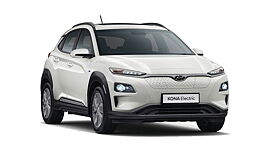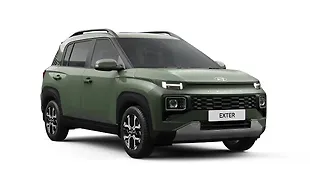Hyundai Nexo: Quick Spin
The world is going green and car manufacturers are trying everything to offer a viable technology when it comes to cars.

Now Hydrogen fuel cell technology isn’t really new and most manufacturers including Hyundai have been dabbling with it for a while now. So what’s new about the Nexo?
One good looking crossover

Let’s start with the way it looks. If you google hydrogen fuel-cell cars, you will find that the mandate is to look…unusual. Well, thankfully Hyundai doesn’t think so. The Nexo is a smart looking crossover that looks futuristic but still manages to look like a conventional car. Also, an SUV-ish design also means it will be well accepted in most markets thanks to SUVs being the trend everywhere around the world.

On the insides, it’s a nice driver-oriented cockpit with a gazillion buttons that control the driving modes, transmission and then some. Taking the centre place is a wide 12.3-inch screen which shows the navigation, media and the energy flow information. It’s also pretty spacious and makes for a very comfortable four-seater.
How does the Nexo work?
So, in the Nexo or any other fuel-cell car, pumps force hydrogen from the fuel tank and oxygen from the outside air into a special device called the fuel-cell stack, where chemical reactions convert those gasses into electricity and water. That electricity, in turn, goes to an electric motor that drives the car. The Nexo also has a 1.56-kilowatt-hour battery to store excess energy from the fuel cell and to allow for recouping some via regenerative braking.

The Nexo can store about 6.35kg of hydrogen in its 52-litre fuel tank and depending on the variant you get a range between 570 to 600 km. Now, this is way more than an EV can manage on a single charge. Another upside to it is that refuelling with hydrogen takes just about five minutes or so as compared to the lengthy charging time of an EV.
How does it drive?

We drove the Nexo on Hyundai’s test track. Right from the time you shift into Drive, the Nexo feels just like an EV. It’s smooth and silent and the 161bhp and 395Nm mean it’s no slouch. Hyundai claims a time of 9.5 seconds to 100kmph which is pretty brisk. Power to front wheels is either from the battery or the fuel cell stack.

We got a very short stint behind the wheel. The Nexo feels pretty similar to the full-fledged EVs. Acceleration is nippy and even post 100 kmph slamming on the accelerator, the Nexo surges ahead. We got to drive it only on the straight on the test track so the driving opinion is quite limited but I’m sure driving the Nexo on the streets should be an interesting experience.
Is this the future?
Let’s make it clear about the Nexo not coming to India first. Hydrogen fuel-cell technology is a long way off for India and it’s pretty clear that it is going to be EVs that will fill in the Indian market space first. Even in International markets, Hydrogen filling stations aren’t exactly a dime a dozen.

So until that happens, the Nexo on its own shows tremendous promise, but the technology itself will still take a while to get accepted entirely. Hyundai, however, believes this is the technology for the future and is going all gung-ho by investing more in technology and hydrogen filling stations and they’re hoping other countries will recognize this too. How that works out remains to be seen.

























